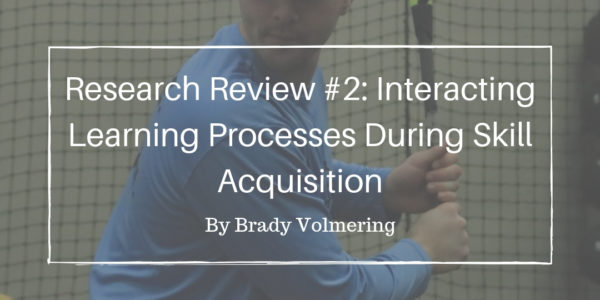Todays review will be taken from the article, “Interacting Learning Processes during Skill Acquisition: Learning to control with gradually changing system dynamics”. A full citation can be found at the bottom of this article.
The goal of this research article was to determine whether a gradual increase in task difficulty would lead to greater task performance when compared with immediate difficulty. Put more simply, they wanted to see if making the task gradually more difficult would allow the subjects to learn better when compared to challenging them with the “most difficult” task right from the beginning.
To test this, they designed a task in which the participants goal was to balance a pole on a cart for 30 seconds with variable gravity being the changing variable. They had two groups. In group one, called the “GG” group (gradual gravity), they started the subjects with a low amount of gravity, effectively giving them more time to respond to the changes in pole angle due to less gravity pulling on the pole. When the subject successfully completed the task, they raised the gravity by 0.1 m/s squared. In group two, called the “CG” group (constant gravity), they immediately started the subject on the most difficult gravity level possible. That level stayed consistent throughout the duration of the exercise. Subjects worked at this for 90 minutes and there was no limit on the number of trials that could be performed.
What They Found:
The subjects who started at a lower level of difficulty showed higher performance throughout the duration of the exercise when compared with their counterparts. While they experienced more variable conditions, these changes were within their ability to adapt, and therefore they experienced a greater ability to learn and get better at the task.
What That Means:
There were several factors the researchers considered important in the subjects learning:
- Early Success: it seems that in order for learning to happen, the subjects need to feel like they are making progress right from the start, even if that means they aren’t at “finished product” level yet. Allowing them to progress at their own pace, congruent with the level they are currently at, may allow them to get to “finished product” level more effectively when compared with trying to push the envelope too quickly.
- Time Between Successes: too much time in between successes seems to indicate that they are being challenged at too difficult of a level to learn. My thoughts: there’s probably a sweet spot we should shoot for. Challenge them, but not so much so they never succeed.
- Internal Forward Models are Vital for Success: an internal model is basically how we predict the action we are going to need to take for each task that we are in, and that prediction is based upon past experience. They found that each time the environment was changed, it interrupted our internal model, which had to then be readjusted to the new task.
Practical Application:
- Practice Design: Don’t ask an athlete to do something they don’t have the capability to do. That doesn’t mean you can’t challenge them. You should challenge them. That’s the only way growth is going to happen. However, you need to be careful and mindful of the pace in which you increase the challenges. Early and often successes seems to lead to later successes. Make sure the athlete has the periodic feeling of growth, which will allow and encourage them to continue taking on progressively more difficult practice.
- Exposure: The first time an athlete sees game-like tasks, in terms of the difficulty, should not be in a game. In the study, we saw that subjects who were immediately thrust into the most difficult situation, performed at a very low level. We need to make sure we progressively introduce players to a higher and higher level of difficulty leading up to their season so that by the time the season hits, they are prepped for what they’re going to see. Think about it like this: while it may be appropriate to start a hitters off-season with dry work, tee, and soft toss, there needs to be a gradual build up of difficulty to prepare them for the season. I hope to put out more content on this in the near future as we approach the 2019 season.
In conclusion: be cognizant of how you are challenging yourself/your athletes. Find your sweet spot. You shouldn’t be failing all the time, but you shouldn’t be succeeding all the time either. Not only that, but be aware of the time of year. We want to expose athletes to situations of high difficulty as they approach their season. However, that doesn’t mean they always need to be in situations of high difficulty. Meet the athlete where they’re at and work as the situation dictates to get them prepare as prepared as possible for the challenges they will be setting out to face.
Hope this helped! Questions or comments? I can be reached via email at brady@dacbaseball.com.
Article Citation:
Ludolph, N., Giese, M. A., & Ilg, W. (2017). Interacting Learning Processes during Skill Acquisition: Learning to control with gradually changing system dynamics. Scientific reports, 7(1), 13191. doi:10.1038/s41598-017-13510-0
